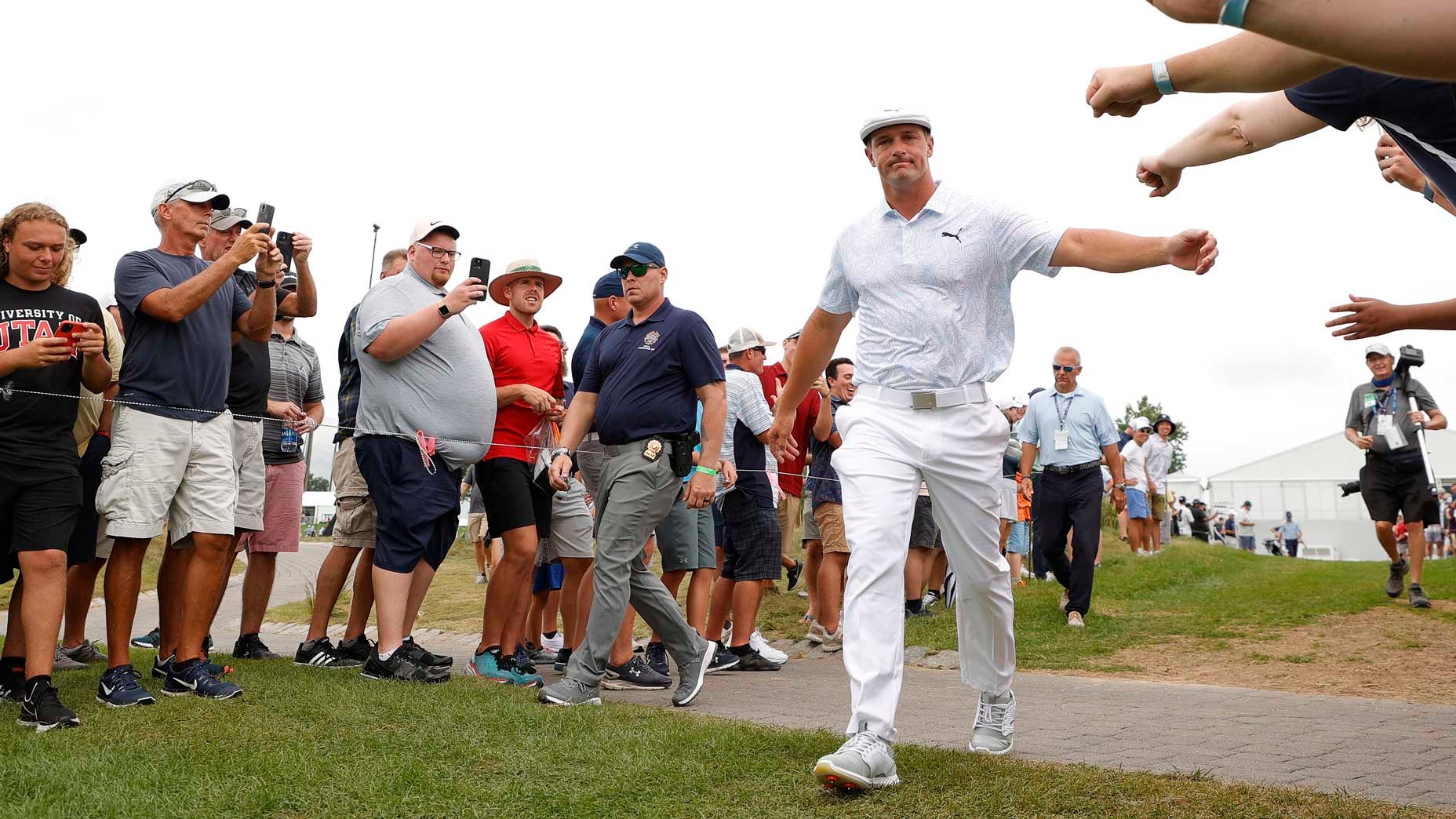No matter your perception of the new Greg Norman-led golf league rumored to be in the works, one thing is already certain: it’s a good thing for the PGA Tour.
Counterintuitive as it may sound, the fledgling investment group that has long been rumored but only recently validated by the riches of Saudi Arabia — with goals to turn the PGA Tour on its side — will be a boost for pro golf as we know it. In some ways, the results will take years, but in others the results are already showing. Competition, in every industry, tends to play out this way.
Decades ago, the PGA Tour had competition, but today it has almost none. The European Tour used to have its own independent schedule and held leverage above the best players from its continent (Ryder Cup privileges). But today it relies upon a “strategic partnership” with the PGA Tour. They are very much cousins these days, and the most obvious evidence of that will take place next summer when the Scottish Open becomes the Genesis Scottish Open. Genesis is a longtime PGA Tour sponsor, and now the Scottish Open will become one of three longtime Euro tour events co-sanctioned by the America tour. Running parallel to that is Thursday’s Golfweek report that the Tour plans to debut a series of guaranteed money events throughout the world (with potential team play!) in 2023 or 2024. On one hand, this is an obvious overreaction. On the other, it’s change!
How does all that happen? It stems from rumors of exciting formats, money that knows no end, and serious consideration from some of the Tour’s brightest stars (or at least their agents). Those three things are the new tour’s main assets, even if they’re mostly conceptual at this point. They’re speaking loudly and boldly and competing for attention. It doesn’t always work in sports, but it almost always leads to change.
Remember, the modern football Skycam was not frequently used on NFL broadcasts until 2001, the season after it was heavily incorporated by XFL broadcasts. As for basketball, the Elam Ending scoring system became popular via an offshoot professional tournament, but has now reinvigorated the NBA’s All Star game with competitive finishes. In baseball, there are new-age pitch clocks, a pace of play tactic that debuted at the college level. In hockey, scoring-friendly overtime rules were put in place to limit the number of shootouts. New leagues, new money, new looks, etc., always bring something novel to the table. But you’d be hard-pressed to find another sports league that has changed as little as the PGA Tour over the last decade.
Justin Thomas explains how the PGA Tour’s new rivals have already spurred changeBy: James Colgan
If you took your time machine back to September 2016, you’d find FedEx Cup points dominating the conversation, two dozen of the same title sponsors and an extremely similar broadcast format. Yes, you can see golf shots better with shot tracer these days, but do you actually see more golf shots?
Back in 2016 you’d find a 48-week schedule, the same playing formats and 30 of the same golf courses. The only significant change the Tour has made to its annual calendar came when it decided to treat pro football as a viable competitor, moving its slate of playoff events forward in the calendar. The upcoming Farmers Insurance Open will end on Saturday night in late January instead of Sunday as to avoid competing with NFL Championship games. It’s clear the Tour takes competition seriously, as it should. Justin Thomas talked about it two weeks ago:
“I think that’s kind of been the main thing that’s come out of this is — look — we can better our product and we can get better because of stuff like this, we can learn from it. I just think that a lot of it was honestly the players not knowing and also maybe the Tour not understanding that it could be done differently and that the players even felt that way.”
There you have it, from a player whose golf will carry any tour for the next 15 years. Thomas shared a similar thought on the NoLayingUp Podcast last week. He then added that he’d lean toward playing wherever the best players in the world play. That’s what would largely dictate his schedule: gearing up for the majors, the biggest events legacy-wise, and events with the best players in the world. That would probably be considered mutual success for the PGA Tour and the new tour, even if execs in Ponte Vedra would hate to admit it.
Just an ounce of success for the fledgling league might prove that 49 events could be a few too many. Or that modern enhancement to the broadcast should extend beyond flying drones, perhaps conceptually toward As many shots as possible, please! Or even that the best players in the world bring in more unquantifiable value than their B-list colleagues. Just an ounce of it might be the perfect ingredient. (Is it possible to get just a splash of the new tour? Probably not, but maybe!)
Without rumors of the new tour, is there a Player Impact Program, the guaranteed annual funds dished out to the Tour’s most popular players? Do we get Bryson vs. Brooks without the PIP? There’s potential for a lengthy string of If This –> Then That clauses that improve “the product,” as Thomas continues to put it. Even if the competition amounts to a rather one-sided tug-of-war, we’re bound to enjoy plenty that comes from it.
Agree? Disagree? Feel free to lob praise, critiques or any commentary at sean.zak@golf.com.











